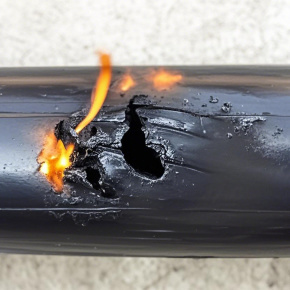
Information
New Energy Storage Scenario Cable Solutions
Release time: 2025-02-19
In today's rapidly developing new energy storage technology, cables, as the key elements connecting various energy storage components, directly relate to the performance and safety of the entire energy storage system. This article will discuss cable layout strategies, anti-corrosion design points, and mechanical performance requirements around three typical scenarios: integrated photovoltaic energy storage charging stations, offshore wind power energy storage systems, and mobile energy storage vehicles.
1. Cable layout strategy for integrated photovoltaic energy storage charging stations
Integrated photovoltaic energy storage charging stations combine photovoltaic power generation, energy storage, and charging functions, achieving efficient and cyclical use of energy. In terms of cable layout, such stations need to consider the collaborative operation of photovoltaic generation areas, energy storage areas, and charging pile areas.
Taking a certain highway service area’s integrated photovoltaic charging station as an example, the capacity of the photovoltaic power generation project at this station is1.296MV, with the photovoltaic area accounting for about69.32%, the charging pile area accounting for3.62%, and the energy storage area accounting for21.04%. The cable layout strategy is as follows:
- Priority strategy:The generated electricity is prioritized for use by the charging piles, and the remaining electricity is used to charge the energy storage system. This strategy requires the cable layout to ensure the efficiency and reliability of power transmission, reducing energy loss.
- Zoned layout:The photovoltaic area, energy storage area, and charging pile area are connected by dedicated cables to ensure independent and efficient power transmission between the areas. For example, the direct current generated in the photovoltaic area is transmitted to the energy storage system or charging piles through dedicated DC cables, reducing losses during the energy conversion process.
- Safety considerations:The cable layout must consider safety factors such as fire prevention and explosion-proof measures. Flame-retardant and fire-resistant cables should be used to ensure that the power supply can be quickly cut off in emergencies, preventing the spread of fire.
In the actual layout, this service area achieved minimal cable length through optimized design, reducing voltage drop and energy loss. At the same time, advanced cable joint technology and sealing measures were adopted to ensure the reliability and safety of cable connections.
2. Key points of anti-corrosion cable design for offshore wind power energy storage systems
Offshore wind power energy storage systems face severe challenges from marine environmental corrosion, so cable design must pay special attention to anti-corrosion performance.
- Coating anti-corrosion:The outer protective layer of the cable uses excellent anti-corrosion coating materials, such as epoxy zinc-rich primer, thick epoxy intermediate paint, and polyurethane topcoat, forming a multi-layer anti-corrosion system. The total dry film thickness of these coatings usually reaches200~320μm, effectively resisting seawater erosion.
- Material selection:The cable conductor and insulation materials must be selected from high-performance materials that are corrosion-resistant and aging-resistant. For example, the conductor uses tinned copper or stainless steel to improve corrosion resistance; the insulation layer uses fluorocarbon coatings orTPEE, etc., to enhance weather resistance and chemical medium resistance.
- Structural design:The cable structure design must consider the uniqueness of the marine environment, such as using metal armor and special casings to protect the cable from mechanical damage and marine biological attachment. At the same time, special sealing and anti-corrosion measures must be taken at the cable joints to ensure long-term reliability at the connections.
Taking a certain offshore wind farm as an example, its energy storage system cables adopted the above anti-corrosion design points, and after long-term operational testing, the corrosion rate of the cables was far below industry standards, ensuring the stable operation and long lifespan of the system.
3. Mechanical performance requirements for flexible cables used in mobile energy storage vehicles
As important equipment for emergency power supply and distributed energy storage, the cables of mobile energy storage vehicles need to have excellent mechanical performance and flexibility.
- High wear resistance:Mobile energy storage vehicles need to move and turn frequently during use, so the cables must have high wear resistance to withstand mechanical friction and wear. Typically, the wear resistance of flexible cables must reach millions of cycles.
- Twist resistance:The cables must have good twist resistance to adapt to the complex deformation during vehicle travel. Twist resistance can be achieved through special cable structures and material selection, such as using reinforced cores and anti-twist structures.
- Cold resistance and weather resistance:Mobile energy storage vehicles may operate under different climatic conditions, so the cables must have excellent cold resistance and weather resistance. For example, they should maintain good flexibility and electrical performance within the temperature range of-40℃~110℃.
- Water and oil resistance:The cables of mobile energy storage vehicles must also have water and oil resistance to withstand the erosion of oil and moisture that may exist inside the vehicle.
Taking a certain model of mobile energy storage vehicle as an example, the flexible cables used have undergone strict testing, achieving wear resistance of over500hundred thousand cycles, excellent twist resistance, and maintaining good electrical performance even under extreme climatic conditions. These performances ensure the stable operation of mobile energy storage vehicles in various complex environments.
In summary, the cable solutions for new energy storage scenarios need to be customized based on the characteristics and requirements of specific application scenarios. By implementing reasonable cable layout strategies, key points for anti-corrosion design, and meeting mechanical performance requirements, the safety, efficiency, and stable operation of the energy storage system can be ensured.
 oversea@hichain.com.cn
oversea@hichain.com.cn
 +8617328576881
+8617328576881










